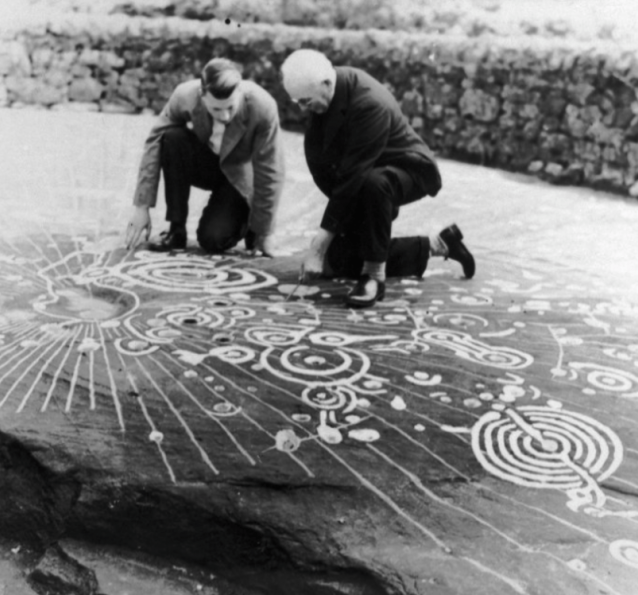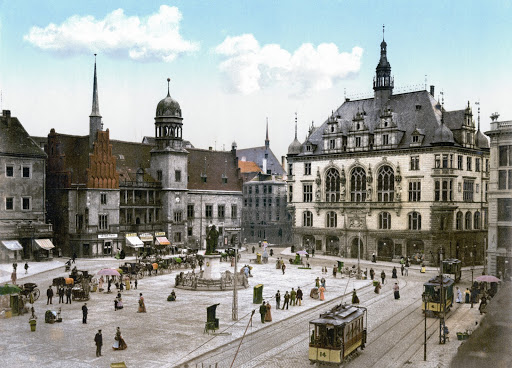I had used Facebook and Google for my entire adult life. I knew they were toxic but I didn't know why. For a few weeks I tried to create a website that would scrape data from Facebook’s API and push data back, puppetting it from my own server. But as I stared headlong into the ever-shifting darkness of the modern web, I despaired and abandoned my attempt. Less than a year later I heard about Urbit. Technically, it went way over my head—but socially I knew exactly what it was, what it always had to be, why it was a discovery and not an invention, a place and not a product. I've watched the settlers there for four years, only just now using the opportunity of the pandemic to swim to this new landscape and gaze upon this young nation, this digital city, this urbis ec bit. I do not work for Tlon. I just live here.
<hr>
All people like to talk. Society is built by talking. In this—the year of our Lord two thousand and twenty—for many (maybe most) talking means typing on computers: handheld, laptop, or desktop. Computers can do all sorts of interesting things, like aid in designing buildings or simulate protein folding—fundamentally, a computer is a machine for doing math really fast. But computers can be networked, which turns them into tools for communication. Because society runs on talking and because computers enable us to do that, the most common thing that computers end up doing is to transmit human thoughts in text. Normal people call this writing, which is a kind of talking. Let’s call it messaging. When we think about building a good computer—and computer network—one that serves society in the best ways needs to do messaging well. Only a small percentage of people will regularly do anything else. (Urbit does serve those needs but I will leave that explanation to more capable minds.)
Modes of Messaging

In general, technology serves humanity as a kind of appendage—instead of thinking new thoughts or acting on its own, it does what we command. Technology never creates new social structures—it merely makes existing ones easier, or it facilitates the creation of new ones. We use our tools to expand our capacities, and once we are capable of doing more, we can imagine new things to do. Inventing the wheel did not invent motorized transportation—but it did facilitate it and it was a necessary step, even an inspirational one. Similarly, the invention of writing made new forms of human interaction and new tools for organization possible.
Consider the following conversational conventions, or modes of messaging: a letter; a dialogue; a book; a meeting; minutes of that meeting. These are each pieces of technology: finely constrained solutions to human problems. Now, we have digital forms of each of these which diverge variously from the original. A letter becomes an email. A dialogue becomes a chat room, or a series of blog posts, or a twitter spat. A book becomes a website or an ebook. Meetings in 2020 have virtually been replaced by their virtual counterparts. Minutes become recordings or transcripts.
Although we do not have a clear picture of how humanity developed the technology of writing out of the basic capacity for speech, we can imagine that the computerization of writing has many parallels. It does not make the old tools obsolete, nor does it immediately introduce new social structures. It does create the potential, however. On the timeline of human existence, we have only had digitized text for a relatively short time. Because we want to understand how to best use these new forms, we should look at their underlying structure.
In order to digitize messages well, computers need to reconcile two facts about all modes of messaging. They have:
- One basic shape, and
- An infinite variety of forms.
1 — The basic shape: all these modes have one common substance: human language. Any conversation is made of words. At first we only had spoken language. Then we discovered writing. Writing allows us to encode our words as glyphs to transmit them over time or distance. The internet extends this capacity. We called this "hypertext"—like good old fashioned text, but one level up. A staggering amount of messaging now takes place over this hypertext transfer protocol (http). In the process of digitizing language, we have learned the basic shape of a message. We can see this in how every social network shares messages in basically the same shape: an author, some content, references, an audience. We can confirm this basic shape by comparing it against our experience of the real world, and the previous comparison between speech and writing. Speech and writing both use the same substance, and take the same basic shape. They all have an author, content, references, and an audience.
2 — Our experience of this one basic shape takes an infinite number of forms. The examples above (letter, meeting, &c) are just a few. These forms depend on the content of the message, the people involved, and the place they occur. All three aspects contribute significantly to its form, but the one that computerized messaging has not adequately compensated for is the place. Content depends only on the author and their intent. Getting certain people to view that content might be more difficult but most know how to use a computer. The place however, has not yet been adequately compensated for, and I think that has contributed seriously to our lack of civil and serious discourse over the internet. A president would not give an address in a bar, and a prospective lover would not utter his advances on stage. In writing, we can use the different physical forms to distinguish place. You shouldn’t read a book by the pool. You might not read a letter in public. You wouldn’t put a billboard in your bedroom.
Furthermore, it seems possible that in our eagerness to "connect the world," we focused injudiciously on creating communities around "interests." Evidence suggests that unless the interest has a highly refined focus, these communities devolve into pandering, self-reference, and exploitation. In this way, the internet is something like a convention of conventions, where you wander in a sea of foreigners loosely affiliated by interest and surrounded by advertising booths. In physical space, people do gather by interest but they also gather by physical proximity—they are grounded and bound in place.
Having an indistinct sense of place makes the form of conversation ambiguous and the participants of the conversation disconnected. Consequently, people are unsure how to interact. One need only know the term "comments section" to understand that.
People in Places

As the internet grew to accommodate new conversation forms using the basic substrate of hypertext, web developers began to conceive of "digital spaces" through analogy—chat "rooms" and "forums,” or the "silo" and the "walled garden." Today, most of our conversation takes place in these walled gardens—privately-owned places which may be beautiful on the inside, but inaccessible from elsewhere. While some of these walled gardens are very large, our conversation is essentially confined to them. There is no roaming from one space to another while keeping one’s identity. We create new identities for new spaces both because we must and because we are afraid of repercussions on one platform for what we say on another. This is because we do not own our identity; we merely have a key—our password. The owners of the walled garden still own the artifacts of our tenure there, and can revoke our access to them at any time.
The concept of identity and the concept of place are fundamentally linked. We imagine the prince who travels overseas where no one knows his name, or we imagine the old prospect of traveling to a new world to make a fortune. While those both exemplify a dramatic change in identity and place, we usually want to keep our identity consistent. We want to be recognized by friends whichever place we go, and we all strive toward having a good reputation, which is a consistent identity across places. This consistent identity also allows control of that reputation per place. A man is not judged in public by the words he says among friends. And there is no way to search what someone has said except by asking him. With our current system of identity providers (an absurd term, but a real one), we surrender our rights to selectively expose our thoughts, regardless of the place they have been uttered. A data breach or a weak password might lay bare our most private thoughts. We run the real risk of being confronted by an old conversation presented out of context or after we have learned better.
People need distinct spaces to form conversations in distinct modes, and they need to have a consistent identity that controls how public their words are.
In theory, we would have a digital city with unique regions, public fora, and sovereign parcels, into which one person might travel at will. In practice, we see this pattern: an app emerges to facilitate a mode of conversation. It gains popularity. Facebook (or Google, or Microsoft) buys and absorbs it. As monolithic empires, they can use the same format for all their messages. This gives them a great amount of power. They use this power to create things like "Sign in with Facebook" (or Google, or Microsoft) that benefit the user by consolidating their identity, but fail to solve the underlying problem. Their problem is that in order to allow people to communicate using the current technology stack, they need to be in control of everything.
Urbis ec Bit

Urbit does solve this underlying problem. At this point the explanation goes so far down the stack that you could spend years tracing it all, but the relevant part is this: Urbit is not an empire; it’s a territory. An empire is an entangling of land and rule: within the bounds of said empire, you agree to be bound by its laws and the penalties for transgression. The laws exist at the whim of a despot or cabal. Your standing as a Roman citizen buys you no favors in Persia. In contrast, a territory imposes only physical laws. For example, in the desert, you will die faster. The only way to change that is to alter the desert. Urbit imposes nothing but the digital equivalent of physical laws. You have an identity which can be said to be truly yours, and you have a piece of software that runs on whatever computer you choose and can do anything you want with the messages sent to your identity. There are no social protocols enforced, because no one can control what software you run on your computer. As long as you agree to communicate using the same basic substrate, you can communicate with anyone using Urbit. This is the digital equivalent of speaking the same language. Whether or not others will accept you into their coalitions is not the technology's concern.
In the same way that the land provides clay and timber, Urbit also provides the tools and material for building places both public and private. These include the aforementioned consistent message substrate (content), as well as tools for organizing people/audiences, structure for referencing other content, and an identity system that is owned only by you while being verified by all. The places are being built—private rooms with just a few people, meeting halls, club houses, huge public spaces, and countless personal encounters, the contents of which are known to none but the participants.
The default tools work with messages in a few of the ways with which we've grown familiar: chat, direct messaging, publishing, link-sharing. They map onto existing forms of messaging because as I said earlier, the technology does not create new social structures; it just facilitates them. We have only seen the beginning of what the internet is capable of doing. Within a few decades it replaced the majority of letters, phone calls, and text dissemination—that was just the first phase of getting up to parity with what written text and speech could already do. In order to get to the next phase of creating new social processes, we need our technology to be organic and democratic, in the sense that everyone can participate and shape it. It needs to have a consensual foundation—a common substrate—and infinite possibility for expression. Urbit provides both of those.
Similar to working undeveloped land, it takes a lot of hard work, which is why Urbit is not ready for mainstream adoption yet, and why I alluded to the idea of settlers in my opening paragraph. Traveling to the new world is not for everyone, but everyone is welcome.
How could one do other than submit to Tlön, to the minute and vast evidence of an orderly plant? It is useless to answer that reality is also orderly. Perhaps it is, but in accordance with divine laws—I translate: inhuman laws—which we never quite grasp. Tlön is surely a labyrinth, but it is a labyrinth devised by men, a labyrinth destined to be deciphered by men.